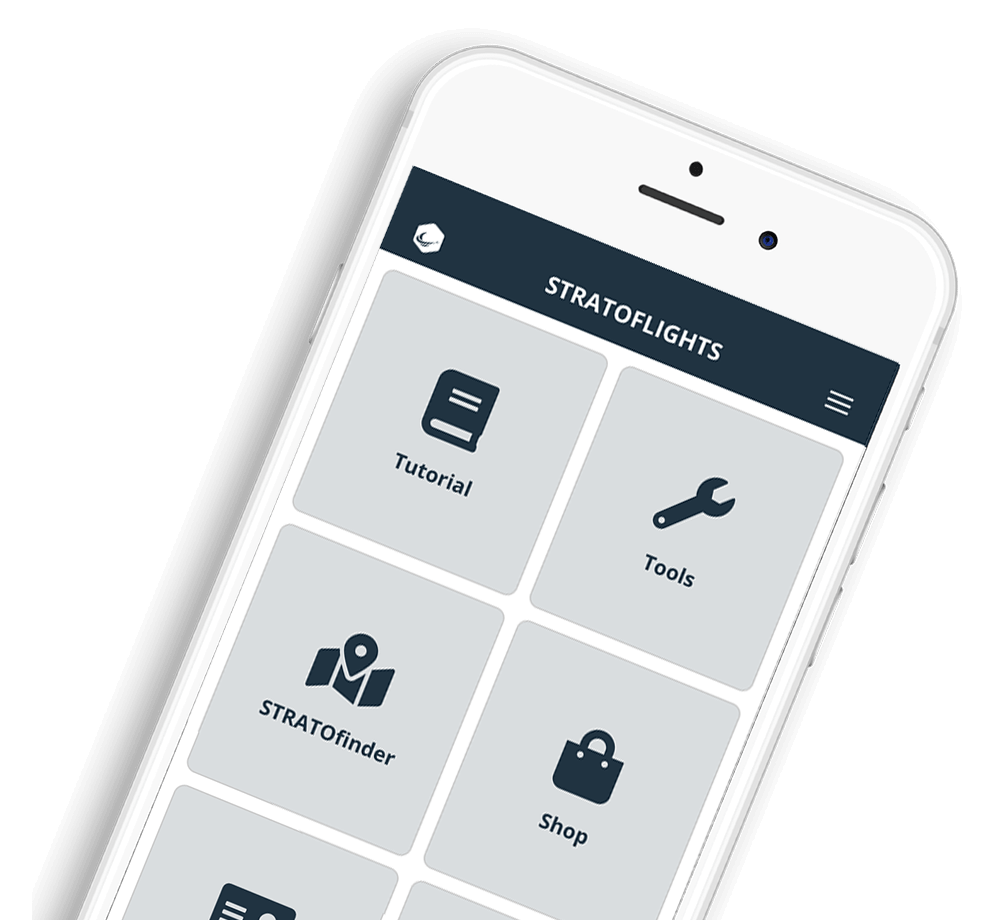Start your own research mission from
the schoolyard to the stratosphere
Combine scientific theory and practice along with a learning experience in an unusual school project idea: With the simplest of means, your pupils construct their own research probe and send small cameras, experiments and measuring instruments into the stratosphere with a helium-filled weather balloon. Experiment with the simplest of means at an altitude of 40,000 metres, three times higher than planes fly, and obtain spectacular video footage and measurement data from an environment where the black of space and the blue of our planet become visible. Whether it's a school project week, a normal lesson or an AG: show your pupils that science is more than just theory, it can be experienced!

Research like NASA
In the stratosphere, conditions are like those in the atmosphere of Mars. Your pupils will conduct research with exciting experiments and measuring instruments like real NASA scientists high above our heads.

Own video recordings and experiments in the stratosphere
The weather balloon now ascends to heights of up to 40,000 metres, where the black of space and the blue of our planet can be seen. The cameras installed in the student probe film the research journey and the measuring instruments record the course of temperature, air pressure, etc.

Scavenger hunt 2.0
The research probe transmits its position data via a GPS tracker so that it can be located with an accuracy of five metres. A group of students is responsible for locating and recovering the stratospheric probe, sifting through the experiments and data and salvaging the equipment such as the cameras.

Development of an own research probe
Your students will plan and construct their own small research probe and equip it with cameras, measurement and tracking technology. The students discuss the challenges of the extreme conditions of the stratosphere and design a probe that protects the technology from temperatures of -65 °C and barely existing air pressure.

From the schoolyard to the edge of space
The research mission is launched from the school's own playground. The probe is equipped with small cameras, experiments as well as a data logger for measurement data and is sent into the stratosphere with a helium-filled weather balloon with a countdown.

Maximum expansion of the weather balloon at minimum ambient pressure
Due to the ever decreasing ambient pressure, the helium in the weather balloon expands to many times its volume until the weather balloon bursts and the research probe sails gently and safely back to earth on its parachute.

Findings of the Stratosphere Flight learning experience for the whole school community
Above all, the breathtaking video recordings from the edge of space show your pupils that natural science is more than pure theory, you can experience natural science!
Learning experience with adventure guarantee: After the stratospheric flight, the experiments, measurement and video data are evaluated and checked against the previously established theses. All information about the "space mission" can be made accessible to the entire school community in school exhibitions and lectures.

Development of an own research probe
Your students will plan and construct their own small research probe and equip it with cameras, measurement and tracking technology. The students discuss the challenges of the extreme conditions of the stratosphere and design a probe that protects the technology from temperatures of -65 °C and barely existing air pressure.

Research like NASA
In the stratosphere, conditions are like those in the atmosphere of Mars. Your pupils will conduct research with exciting experiments and measuring instruments like real NASA scientists high above our heads.

From the schoolyard to the edge of space
The research mission is launched from the school's own playground. The probe is equipped with small cameras, experiments as well as a data logger for measurement data and is sent into the stratosphere with a helium-filled weather balloon with a countdown.

Own video recordings and experiments in the stratosphere
The weather balloon now ascends to heights of up to 40,000 metres, where the black of space and the blue of our planet can be seen. The cameras installed in the student probe film the research journey and the measuring instruments record the course of temperature, air pressure, etc.

Maximum expansion of the weather balloon at minimum ambient pressure
Due to the ever decreasing ambient pressure, the helium in the weather balloon expands to many times its volume until the weather balloon bursts and the research probe sails gently and safely back to earth on its parachute.

Scavenger hunt 2.0
The research probe transmits its position data via a GPS tracker so that it can be located with an accuracy of five metres. A group of students is responsible for locating and recovering the stratospheric probe, sifting through the experiments and data and salvaging the equipment such as the cameras.

Findings of the Stratosphere Flight learning experience for the whole school community
Above all, the breathtaking video recordings from the edge of space show your pupils that natural science is more than pure theory, you can experience natural science!
Learning experience with adventure guarantee: After the stratospheric flight, the experiments, measurement and video data are evaluated and checked against the previously established theses. All information about the "space mission" can be made accessible to the entire school community in school exhibitions and lectures.























